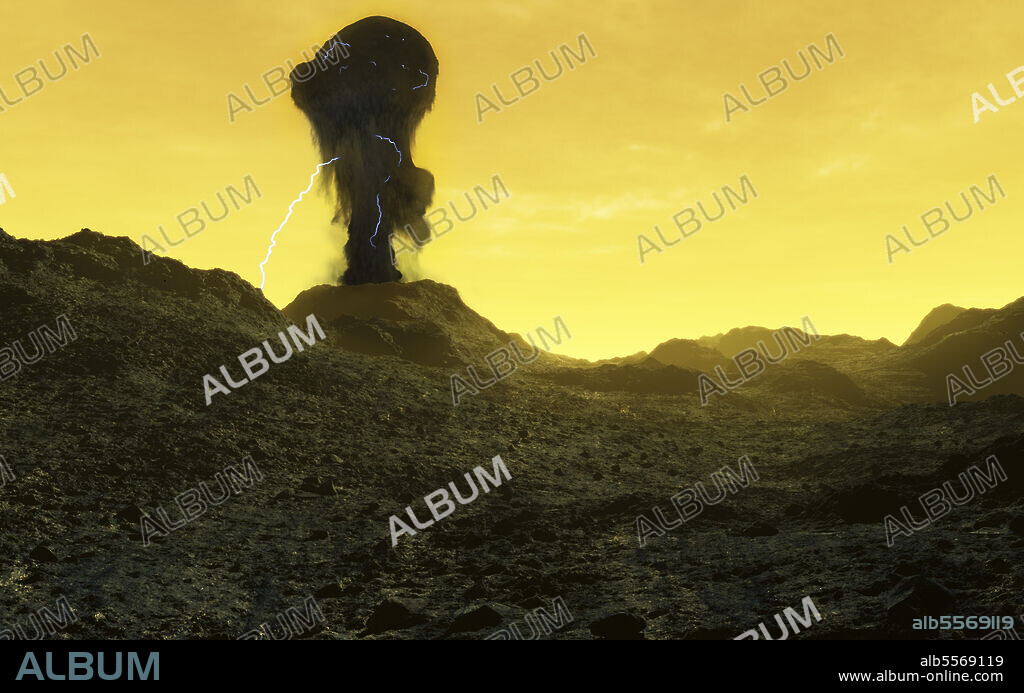alb5569119
The surface of an infernal planet, Venus.

|
Ajouter à une autre Lightbox |
|
Ajouter à une autre Lightbox |



Avez-vous déjà un compte? S'identifier
Vous n'avez pas de compte ? S'inscrire
Acheter cette image.
Sélectionnez l'usage:

Titre:
The surface of an infernal planet, Venus.
Légende:
Voir la traduction automatique
The surface of an infernal planet, Venus. Temperatures as high as 500 C (900 K) have been measured. The thick atmosphere, which is about 90 times denser and more massive than Earth's, traps the heat it receives from the sun. This creates a very strong greenhouse effect. The atmosphere is believed to be a consequence of a hypothetic collision with a large body in Venus' past. This collision is also believed to be the reason why the planet rotates backwards, and so slowly that one could walk around the planet faster than it rotates. One day on Venus (243 Earth days) is longer than one year (225 Earth days)!. On the surface, there is little to no wind, but as one ascends into the atmosphere one will find stronger winds and clouds containing sulphuric acid. This sulphur condenses into drops and falls down towards the surface, but the rain drops never reach it, and the heat makes them evaporate into the air again.. Spacecraft that have been sent to Venus have discovered multiple volcanoes, and they have also discovered what they believe is lightning in the atmosphere.
Crédit:
Album / Fahad Sulehria/Stocktrek Images
Autorisations:
Taille de l'image:
5352 x 3345 px | 51.2 MB
Taille d'impression:
45.3 x 28.3 cm | 17.8 x 11.2 in (300 dpi)
Mots clés:
ASTRONOMIE • ASTRONOMIE: PLANETES • ASTROPHYSIQUE • CIEL • CIEL, ECLAIRS • COSMOS • DEHORS • ECLAIR • EN PLEINE NATURE • FOUDRE • GEOLOGIE • ILLUSTRATION • METEOROLOGIE • ORAGE ECLAIRS • PLANETE • PLANÈTES • SCIENCE: ASTRONOMIE • SOUFRE • TEMPERATURE • VOLCAN
 Pinterest
Pinterest Twitter
Twitter Facebook
Facebook Copier le lien
Copier le lien Email
Email
